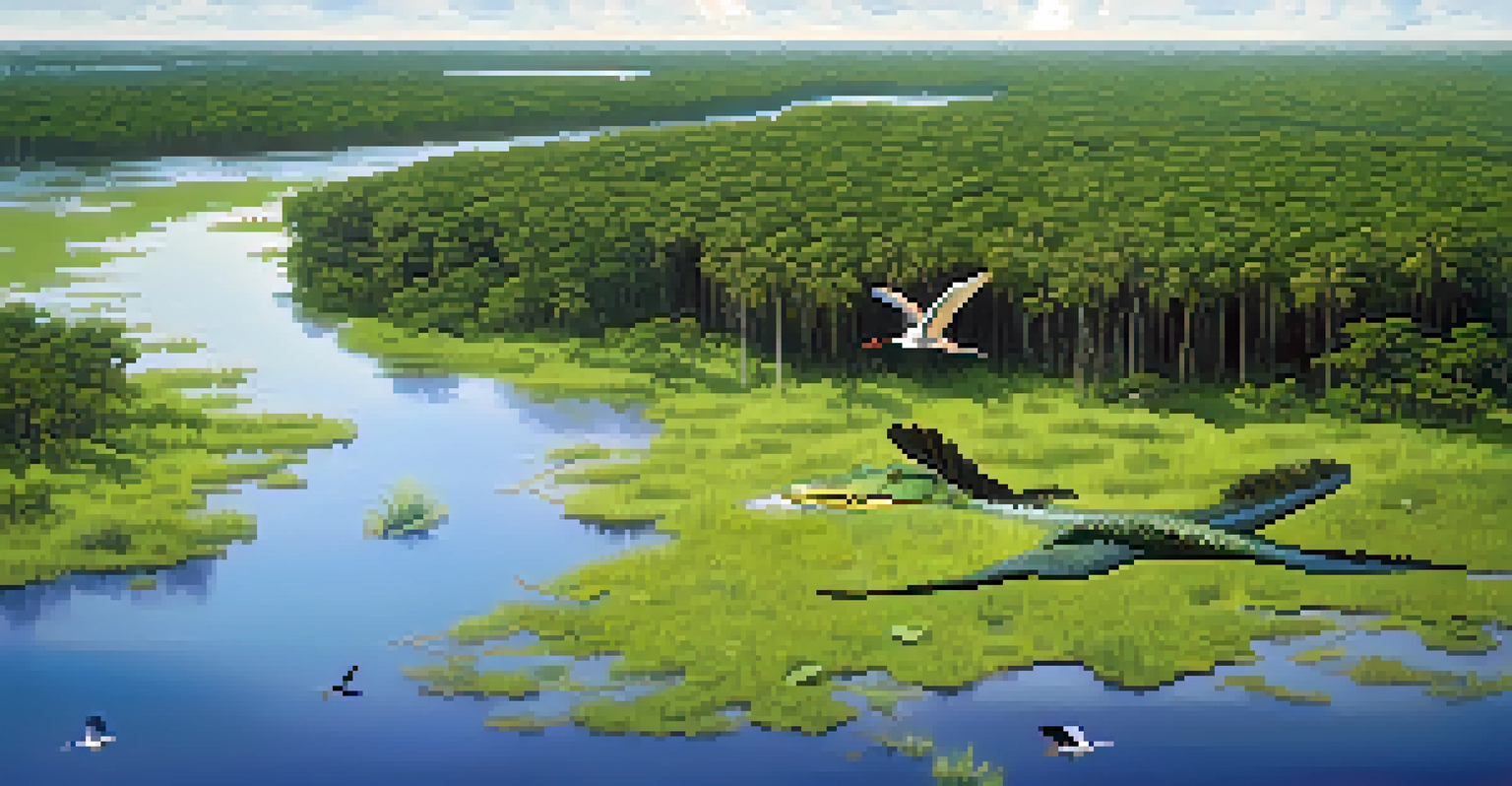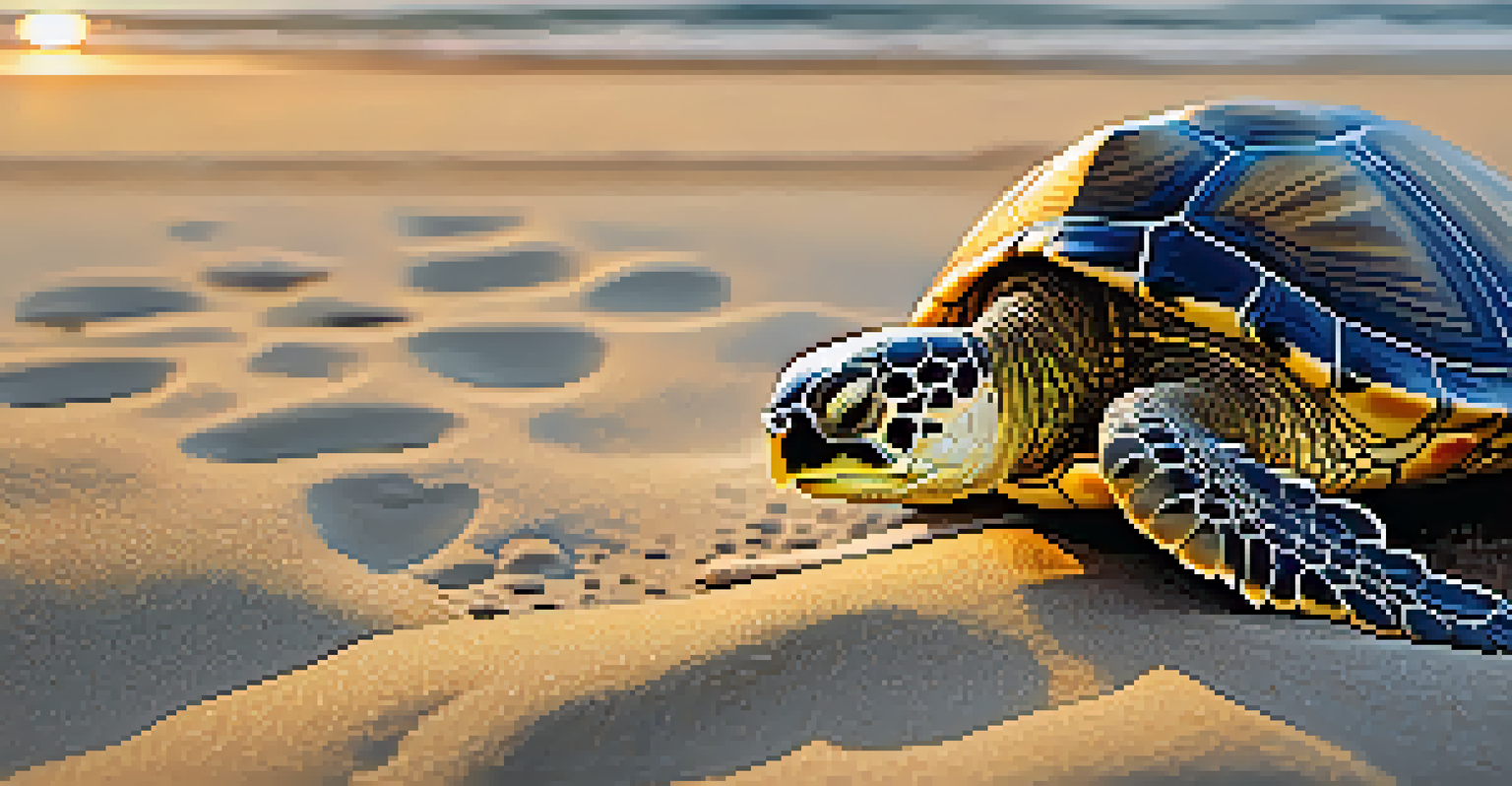Impact of Climate Change on Florida's Wildlife and Ecosystems

Understanding Climate Change and Its Global Impact
Climate change refers to long-term shifts in temperatures and weather patterns, largely driven by human activities like burning fossil fuels. This phenomenon has far-reaching effects, impacting everything from sea levels to biodiversity. In Florida, the subtropical climate makes it particularly vulnerable to these changes, leading to significant shifts in its ecosystems.
What we are doing to the forests of the world is but a mirror reflection of what we are doing to ourselves and to one another.
As temperatures rise, weather events become more extreme, and the delicate balance of Florida's ecosystems is disrupted. For example, increased rainfall can lead to flooding, affecting habitats and species that are not equipped to handle sudden changes. Understanding the global context of climate change helps us appreciate the severity of its impact on local wildlife.
Moreover, the interconnectedness of ecosystems means that changes in one area can have ripple effects elsewhere. For instance, if a particular species declines due to climate pressures, it can affect predators and prey alike, leading to a cascading effect throughout the food web.
The Effect of Rising Temperatures on Species
Rising temperatures in Florida create challenges for many species that are adapted to specific climate conditions. For instance, the American alligator, a key predator in freshwater wetlands, may struggle as water temperatures exceed optimal levels, affecting their reproduction and survival rates. Such shifts can disrupt food chains, leading to broader ecological consequences.

Bird species, too, are feeling the heat. Many migratory birds rely on specific temperature cues for breeding and feeding. As these cues change, some birds may arrive too early or too late, missing out on vital food resources that affect their reproductive success. This misalignment can threaten species populations and the overall health of ecosystems.
Climate Change Affects Ecosystems
Climate change leads to significant shifts in ecosystems, posing threats to local wildlife and biodiversity in Florida.
In addition to direct impacts on species, rising temperatures can alter habitats, such as mangroves and coral reefs. These ecosystems provide crucial support for a variety of wildlife, and their degradation can lead to a loss of biodiversity, making it harder for species to thrive in a changing environment.
Sea Level Rise and Its Threat to Coastal Wildlife
Florida’s extensive coastlines are increasingly threatened by rising sea levels resulting from climate change. This phenomenon leads to the loss of critical habitats like mangroves and salt marshes, which serve as nurseries for many marine species. As these vital ecosystems disappear, the fish and wildlife that depend on them face dire consequences.
The Earth does not belong to us: we belong to the Earth.
For example, nesting sites for sea turtles are at risk as beaches erode and saltwater encroaches. If the turtles can’t find suitable nesting areas, their populations could plummet. This situation highlights the urgent need for conservation efforts to protect these vulnerable habitats.
Moreover, the intrusion of saltwater into freshwater systems can alter the composition of local ecosystems, affecting species that thrive in brackish conditions. This shift can endanger native fish species and disrupt the food sources for birds and other wildlife that rely on healthy aquatic ecosystems.
Impact of Extreme Weather Events on Habitats
Florida is no stranger to hurricanes and severe storms, but climate change is making these events more common and intense. With stronger winds and heavier rainfall, the destruction of habitats becomes a frequent occurrence. For wildlife, this means losing shelter and food, which can lead to population declines.
Take coral reefs, for instance, which can be severely damaged by powerful storms. These ecosystems are already stressed by rising ocean temperatures, and hurricane-induced damage can take years to recover. As coral reefs decline, so do the myriad species that depend on them for shelter and food, creating a significant imbalance in marine ecosystems.
Rising Sea Levels Threaten Wildlife
As sea levels rise, critical habitats like mangroves and nesting sites for species such as sea turtles are increasingly at risk.
Furthermore, flooding from extreme weather can result in pollution runoff, impacting water quality in lakes, rivers, and coastal areas. This pollution can harm aquatic life and disrupt breeding cycles, making it even more challenging for wildlife to adapt to the changing environment.
Biodiversity Loss and Its Consequences
Florida is home to a diverse array of wildlife, but climate change poses a serious threat to this biodiversity. As habitats shift or disappear, many species struggle to adapt or find new homes. This loss of biodiversity can weaken ecosystems, making them less resilient to further changes and disturbances.
For instance, the endangered Florida panther relies on a specific habitat to thrive. As climate change alters its environment, the panther faces challenges in finding suitable territory and prey. This situation not only threatens the species but also disrupts the balance of the ecosystem it inhabits.
Moreover, declining biodiversity can lead to a loss of ecosystem services, such as pollination and water purification, which are vital for human communities as well. Protecting Florida's diverse species is crucial not just for wildlife but for the health of the entire ecosystem and the well-being of the people who rely on it.
The Role of Conservation Efforts in Mitigating Impact
Conservation efforts play a critical role in addressing the impacts of climate change on Florida's wildlife and ecosystems. By protecting key habitats and implementing restoration projects, we can help mitigate some of the adverse effects that climate change poses. For instance, preserving wetlands can help buffer against flooding and provide crucial habitats for various species.
Organizations and local communities are actively working together to create conservation strategies that consider climate change projections. This collaborative approach ensures that efforts are focused on the most vulnerable areas and species, maximizing the impact of conservation initiatives. Every small action counts, from habitat restoration to community education.
Conservation Efforts Are Crucial
Active conservation efforts are essential for mitigating the impacts of climate change and preserving Florida's unique wildlife and ecosystems.
Moreover, engaging the public in conservation efforts can foster a sense of responsibility and connection to the environment. By raising awareness about the importance of biodiversity and ecosystem health, we encourage individuals to take action, whether through volunteering or supporting local conservation programs.
Looking Forward: The Future of Florida's Ecosystems
The future of Florida's wildlife and ecosystems hinges on how we respond to the challenges posed by climate change. With proactive measures, such as sustainable land use and habitat protection, there’s hope for preserving the state’s unique biodiversity. It’s essential to envision a future where both wildlife and human communities can thrive together.
Innovative approaches, such as the use of climate-resilient species in restoration efforts, can help ecosystems adapt to changing conditions. By promoting biodiversity and enhancing ecosystem resilience, we can create a buffer against the impacts of climate change. This holistic approach aligns with the goal of creating a sustainable future for all.

Ultimately, the actions we take today will shape the landscape of Florida’s ecosystems for generations to come. By working together to address climate change, we can ensure that Florida remains a vibrant home for its diverse wildlife and a beautiful place for future generations to enjoy.